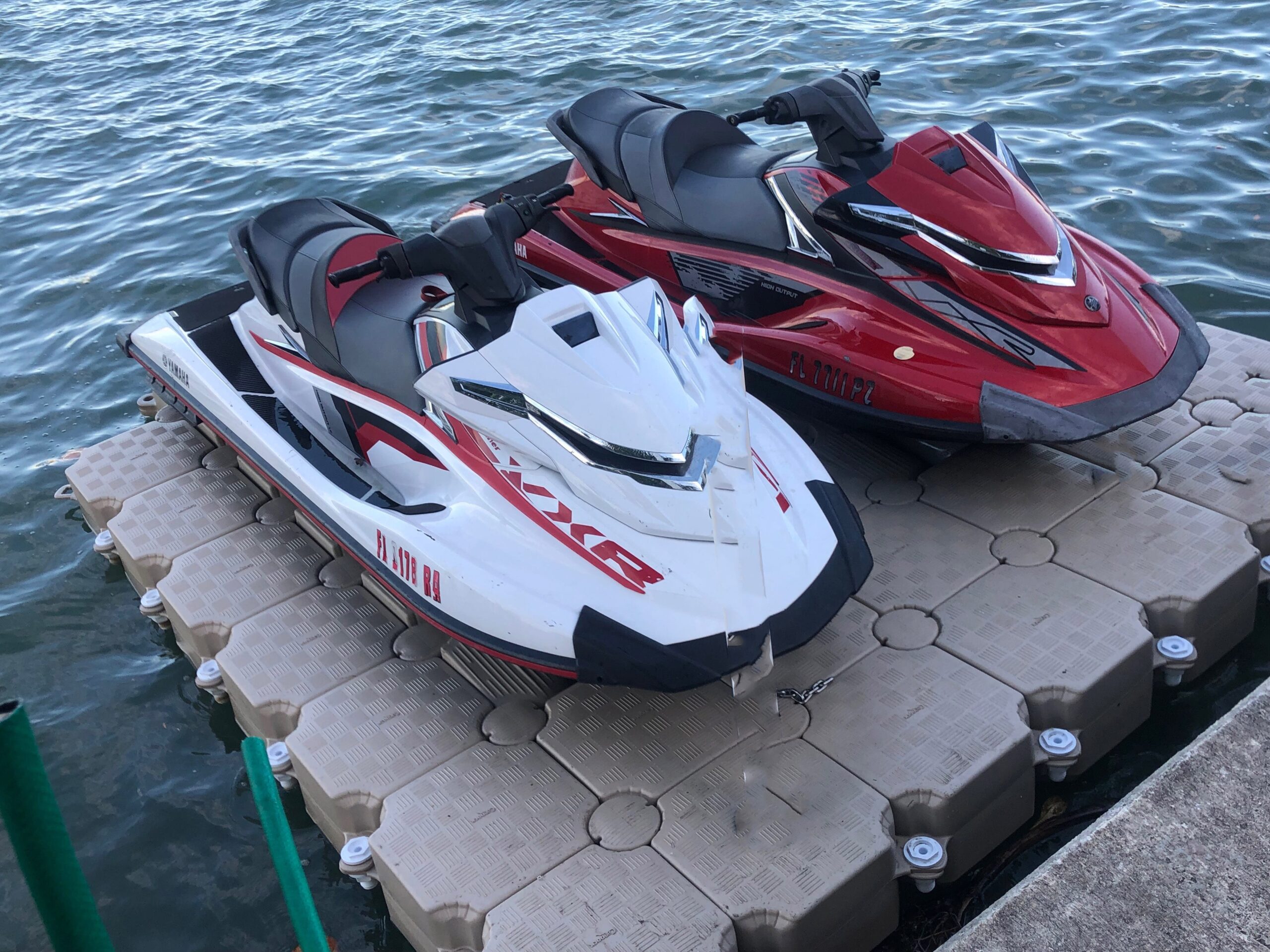Sombrero Reef: A Guide to Florida's Underwater Treasure
Sombrero Reef, located in the Florida Keys near Marathon, is a stunning coral reef that captivates visitors with its rich marine life and picturesque underwater views. It's one of the most popular snorkeling and diving spots. The reef is known for its shallow waters, vibrant corals, and a historic lighthouse.
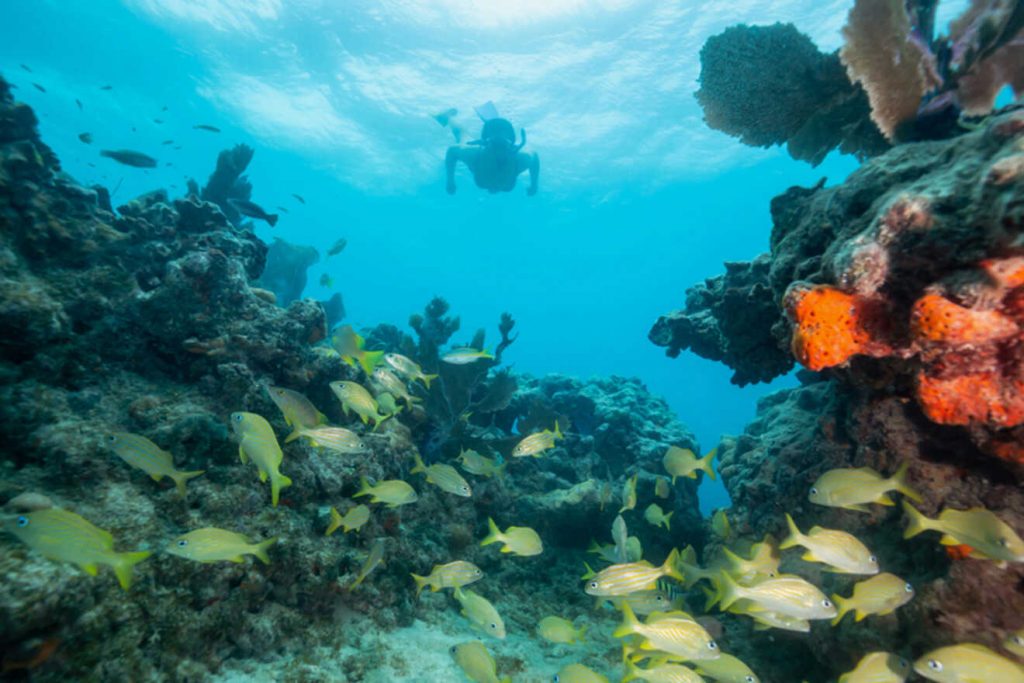
Visitors can explore a diverse array of colorful fish and intricate coral formations, making it a must-see destination for ocean enthusiasts.
The reef has a classic spur-and-groove formation which is ideal for both novice and experienced snorkelers. It's not just a beautiful site; it also plays a crucial role in the local marine ecosystem. The area serves as a sanctuary for many marine species, although it faces threats from climate change, such as coral bleaching. Conservation efforts are ongoing to protect and restore this valuable underwater treasure.
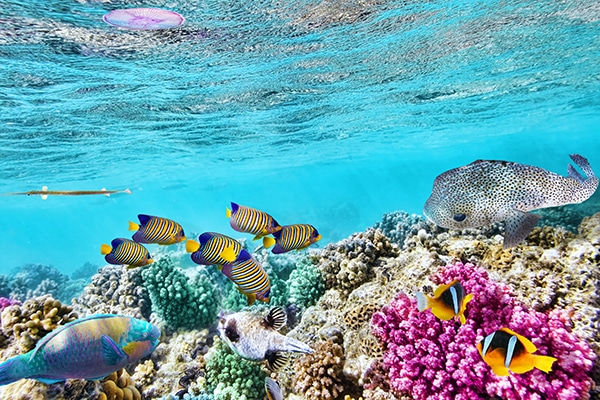
For those planning a visit, guided snorkeling tours offer an opportunity to see the reef up close with the comfort of a covered catamaran and knowledgeable crew. These tours provide all necessary equipment and refreshments, ensuring a safe and enjoyable experience. Whether you're an avid diver or just looking to try something new, Sombrero Reef promises an unforgettable adventure.
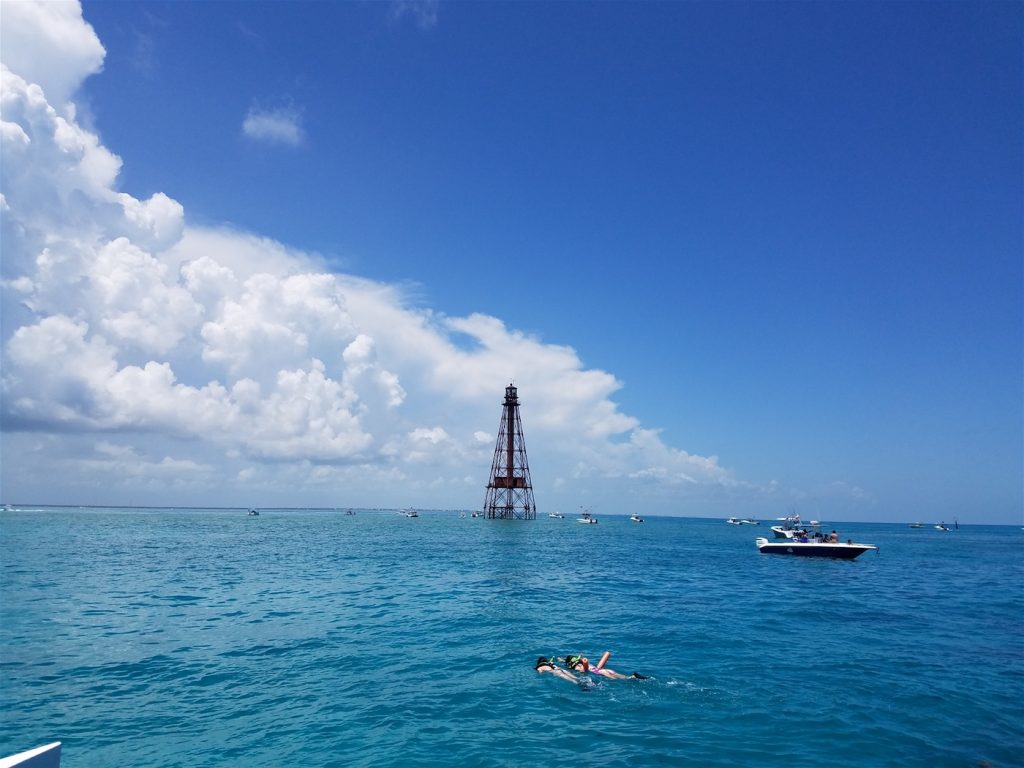
Key Takeaways
- Sombrero Reef is a top snorkeling and diving destination in the Florida Keys.
- The reef supports diverse marine life but faces threats from climate change.
- Guided tours enhance the experience with safety and expert knowledge.
History of Sombrero Reef
Sombrero Reef has a fascinating past tied to its crucial navigation aids and its significance to maritime activities.
Sombrero Key Light
The Sombrero Key Light, also known as the Sombrero Reef Lighthouse, was established in 1858. Located on a portion of the reef, the structure stands 142 feet tall. It was an essential navigation aid before the advent of modern GPS technology.
General George Meade built the lighthouse, and it was the tallest iron structure until the Eiffel Tower's completion in 1887. The reef around the lighthouse is mostly submerged, but parts of it can be seen during low tide. Sombrero Key Light helped mariners safely navigate the hazardous waters of the Florida Keys, marking a significant point for vessels heading toward deeper international waters.
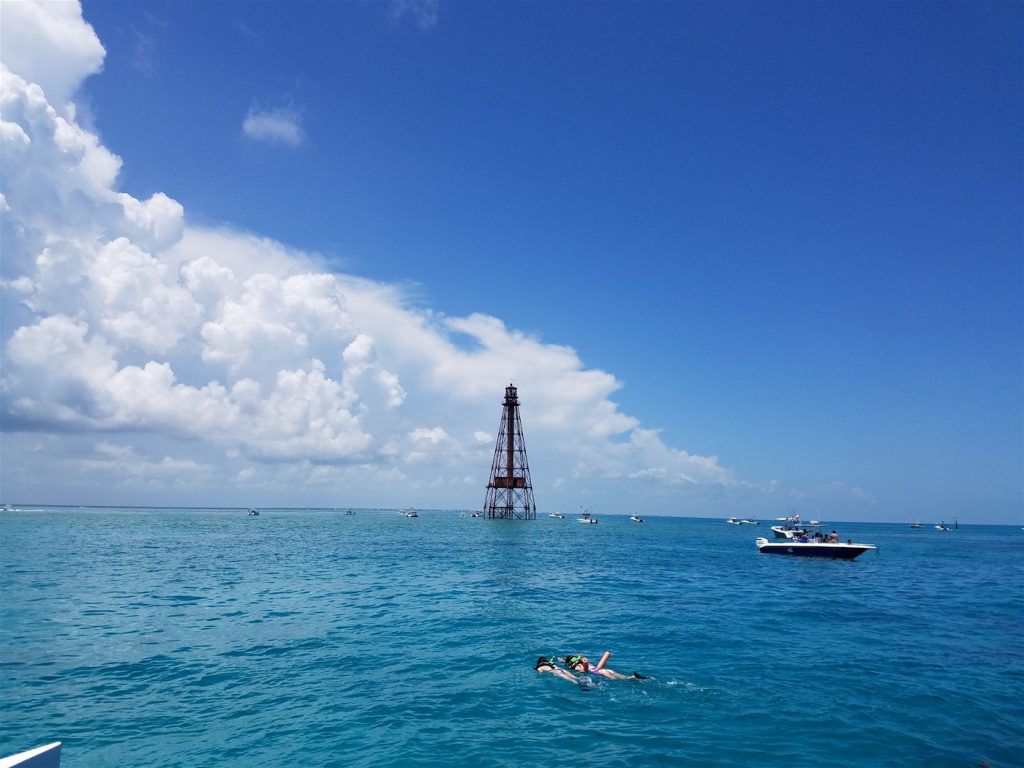
Maritime Significance
Sombrero Reef holds considerable maritime importance. The reef is part of a designated Sanctuary Preservation Area, which means it is protected to preserve its natural beauty and biodiversity.
Historically, the reef has been a critical point for guiding ships away from the shallow areas that could cause shipwrecks. The reef's underwater structures, known as spur and groove formations, helped define navigable channels for early mariners. Today, Sombrero Reef remains a popular spot for activities like scuba diving and snorkeling, allowing visitors to witness its vibrant marine life and significant underwater landscapes. The reef continues to be managed carefully to balance human activity with environmental conservation efforts.
Ecological Importance
Sombrero Reef is a vital marine ecosystem, supporting rich biodiversity and providing a habitat for numerous protected species. It plays a crucial role in maintaining the health of the ocean environment in the Florida Keys.
Coral Reef Biodiversity
Sombrero Reef is home to a diverse range of coral species, including star corals, elkhorn corals, and brain corals. These corals create complex structures that provide habitats for various fish and other marine life. The reef supports species such as parrotfish, angelfish, and wrasses. Restoring coral cover to about 16% is a goal set by NOAA's Mission: Iconic Reefs program to enhance biodiversity.
Despite its richness, the reef faces significant threats from coral bleaching and other environmental pressures. Coral bleaching, often caused by rising sea temperatures, leads to the loss of vibrant coral communities. Protecting the reef is crucial for preserving its biodiversity and ensuring the survival of its many inhabitants.

Protected Species
Several protected species rely on Sombrero Reef for survival. The reef is a designated Sanctuary Preservation Area, offering a safe haven for marine life. It supports nesting bird species and serves as an essential habitat for sea turtles. For example, migratory species such as pelagics also depend on this complex ecosystem.
Efforts have been made to eliminate threats and promote recovery, such as removal of invasive mice that harmed native animals. Adhering to animal welfare guidelines ensures that native species can thrive. Preserving this habitat helps maintain ecological balance, benefiting both local wildlife and the broader marine environment.
Recreational Activities
Sombrero Reef offers a variety of activities for visitors. Families can enjoy snorkeling and diving in the clear waters, while also considering fishing guidelines and beach access features.
Snorkeling and Diving
Snorkeling and diving at Sombrero Reef are extremely popular. The reef, located near Vaca Key, features vibrant coral formations and a variety of marine life. Snorkelers and divers can explore underwater landscapes teeming with colorful fish, sea turtles, and rays.
Snorkeling gear can be rented from local shops or brought along. The reef is known for being family-friendly, making it a great spot for both novice and experienced divers. On TripAdvisor, visitors often highlight the crystal-clear waters and the ease of seeing marine life.
Fishing Guidelines
Fishing at Sombrero Reef is regulated to protect the ecosystem. There are designated zones where fishing is allowed, and some areas are strictly for snorkeling and diving. Anglers need to be aware of these zones and follow all local regulations.
Fishing within the Special Preservation Areas (SPA) is prohibited to conserve the delicate marine environment. Travelers should consult up-to-date rules before planning their trip. Carrying a valid fishing license is a must.

Beach Access and Features
Beach access to Sombrero Reef is primarily through boat tours. These tours provide convenient and regulated access to the reef, ensuring minimal environmental impact. Most tours offer gear rental, knowledgeable guides, and sometimes even refreshments.
Beaches around Vaca Key are renowned for their natural beauty. They are often praised in reviews for their sandy shores and clear water, making it a perfect spot for relaxation. Accessing the reef from the beach can be challenging, so boat tours are a recommended option.
Conservation Efforts
Efforts to conserve Sombrero Reef focus on restoring coral health and protecting marine wildlife. These initiatives are vital due to the severe impact of coral bleaching and rising ocean temperatures.
Coral Protection Initiatives
The Sombrero Reef has faced significant coral bleaching, leading to 100% coral mortality. In response, the National Oceanic and Atmospheric Administration (NOAA) launched Mission: Iconic Reefs. This ambitious program aims to restore seven critical reefs, including Sombrero Reef.
The mission plans to cover three million square feet with at least 25% live coral by 2040. Additionally, the Coral Restoration Foundation is actively working to replant and monitor coral polyps. These groups use innovative methods to grow resilient coral species that can better withstand warming waters.
Wildlife Preservation
Beyond coral, efforts also extend to the broader reef ecosystem. NOAA and partners such as Reef Renewal USA and the Mote Marine Laboratory focus on safeguarding marine species that depend on the reef for survival.
Sanctuary Preservation Areas restrict human activities like fishing and boating to minimize harm to wildlife. Special attention is given to endangered species like the Nassau grouper and various reef fish. Efforts include habitat restoration, monitoring fish populations, and reducing threats from pollution and climate change. This multifaceted approach helps maintain biodiversity and supports the reef's ecological balance.
Visitor Information
Sombrero Reef is a popular snorkeling site located in Marathon, Florida. Visitors can experience its vibrant marine life and unique coral formations. Here are essential details to plan your visit effectively.
Best Times to Visit
The best time to visit Sombrero Reef is during the dry season, which runs from November to April. During these months, the weather is more predictable, with fewer storms. Water temperatures range from 70°F to 80°F, ideal for swimming and snorkeling.
Visibility is generally good, around 30 to 50 feet, making it easier to see the reef's beauty. Early mornings often provide the calmest conditions. It’s also less crowded compared to the afternoon.
Travel Tips and Guidelines
When visiting Sombrero Reef, it’s important to bring reef-safe sunscreen to protect the coral. Renting snorkeling gear is possible in Marathon, but consider bringing your own for the best fit.
Keep an eye on the weather conditions and be aware of the tidal changes. Wearing a life vest is advisable, especially for novice swimmers, due to occasional strong currents.
Mooring buoys are available to secure your boat without damaging the reef. Dispose of all trash properly and avoid touching or stepping on the coral to preserve its natural state. Planning your trip with these guidelines ensures a safe and enjoyable experience.
Marine Life Encounters
Sombrero Reef is home to diverse marine life, providing an incredible experience for snorkelers.
From colorful corals to various fish species and larger marine animals, visitors often encounter a fascinating underwater world.
Commonly Seen Species
Snorkelers at Sombrero Reef frequently see an amazing variety of fish and other marine creatures.
Tropical fish like parrotfish and angelfish are common, adding vibrant colors to the reef.
Grouper and hogfish can often be spotted near coral formations.
Additionally, blue tang and grunts are seen swimming in schools.
For those lucky enough, encounters with sea turtles and nurse sharks are possible.
Occasionally, snorkelers might even spot larger predators such as barracuda and other types of sharks at a safe distance.
The reef’s corals themselves, including boulder and branch varieties, are home to countless tiny organisms that contribute to the reef’s health and beauty.
Interaction Guidelines
Respect for marine life is crucial while exploring Sombrero Reef.
Snorkelers should avoid touching the corals or disturbing the fish to protect the reef’s delicate ecosystem.
Instead, observing from a distance without interfering ensures that the natural behaviors of creatures like tropical fish and sea turtles are not disrupted.
It is important to use reef-safe sunscreen to prevent harmful chemicals from damaging the reef.
Additionally, anchoring boats directly onto the reef should be avoided to protect the coral structures.
Guides provide valuable tips about the area, helping you understand the best practices to follow while enjoying the incredible marine life of Sombrero Reef.
For more information, visit Sombrero Reef - All You Need to Know and Sombrero Reef Snorkeling Tours.
Navigating Sombrero Reef
Navigating Sombrero Reef requires knowledge about reaching the reef and understanding its unique structure. Here’s what you need to know to explore it safely and enjoy its beauty.
Mooring Buoys and Boat Access
Visitors can access Sombrero Reef via boat, often departing from the Marathon area in the Middle Keys. Many choose to take a snorkel boat tour for a guided experience.
The reef features mooring buoys, which allow boats to dock without damaging the coral.
Mooring buoys are crucial as anchoring on the reef is discouraged to protect the delicate coral.
Tying boats to these buoys helps preserve the ecosystem while providing a safe and secure spot for visitors to start their exploration.
Boaters should look for the buoys and secure their boats properly before diving in.
Ensure your boat is equipped with proper navigation and safety gear.
Always keep an eye on weather conditions, as sudden changes can impact visibility and safety at the reef.
Understanding the Spur-and-Groove Formation
Sombrero Reef is a prime example of a spur-and-groove coral reef. This formation consists of parallel ridges of coral (spurs) separated by sand channels (grooves).
The reef's distinctive structure creates a diverse underwater landscape with plenty to explore.
These formations serve multiple purposes. The spurs offer a habitat for various types of sea life, such as colorful fish and sponges.
The grooves in between act as natural pathways that make navigating the reef easier for both snorkelers and marine creatures.
Clear water conditions often enhance the visibility, providing an unobstructed view of the reef’s beauty.
Familiarize yourself with the layout of the reef to ensure a safe and enjoyable visit.
Always maintain a safe distance from the coral to avoid accidental damage and to protect this vibrant ecosystem.
Environmental Concerns
Sombrero Reef has faced significant damage due to both rising ocean temperatures and human activities. These issues threaten the health and longevity of this vital marine habitat.
Climate Impact on Reef Health
Rising sea temperatures have greatly affected Sombrero Reef. Prolonged heat waves cause coral bleaching, a process where corals lose their color and essential algae.
Without these algae, corals starve and die, leading to 100% coral mortality in certain areas.
The reefs around Sombrero have turned to graveyards. Notably, the heatwave of 2024 severely damaged the region's reefs. Live elkhorn coral was only found at a few sites.
Rising ocean temperatures also impact other marine life, disturbing the delicate balance of the marine sanctuary.

Human Activities and Their Effects
Human activities add to the woes of Sombrero Reef. The reef, a popular site for snorkeling and diving, witnesses frequent visits, causing physical damage to corals.
Anchor drops, trampling, and pollution are significant threats.
Pollution from coastal development and boat traffic increases the likelihood of coral disease.
Conducting activities without adhering to animal welfare guidelines results in the degradation of reef habitats.
Preservation efforts are hampered by overuse and misuse by visitors, affecting both the reef and its marine inhabitants.
Local Economy and Sombrero Reef
Sombrero Reef plays a vital role in both tourism and the fishing industry in the Florida Keys, impacting the Middle Keys specifically. The reef supports vacation activities and safeguards the local economy through its diverse marine life and natural beauty.
Tourism Economy
Sombrero Reef is a major tourist destination, attracting divers and snorkelers eager to explore its vibrant coral formations and see species like brain corals and barrel sponges.
Visitors are drawn by the opportunity to see the threatened star corals listed under the Endangered Species Act.
This influx of tourists injects significant revenue into the local economy.
Millions of annual visitors contribute around $2.4 billion each year, creating about half of the jobs in the area.
Tourists also enjoy the historic Sombrero Light, built in 1858. Its presence enhances the reef's appeal, making it a popular spot for memorable vacation activities.
The Fishing Industry
The reef also supports a thriving fishing industry in the Middle Keys.
The barrier reef structure of Sombrero Reef provides a habitat for numerous fish species, benefiting local fishermen.
Catching fish near the reef boosts the local seafood market and sustains many livelihoods.
Fishermen also gather sponges, which are abundant due to the healthy coral environment.
The sustainability of fishing activities at the reef is crucial for keeping the economy balanced and ensuring long-term benefits for the community.
Frequently Asked Questions
Sombrero Reef offers diverse marine life, unique landmarks, and various diving opportunities. Visitors can explore its rich underwater world, navigate towards the lighthouse, and follow fishing regulations specific to the area.
What types of marine life can be seen while snorkeling at Sombrero Reef?
Snorkelers at Sombrero Reef can encounter a variety of vibrant fish, including angelfish and parrotfish.
Coral formations like star corals, elkhorn corals, and brain corals are also prevalent. Observers might spot queen conchs and other sea creatures residing among the corals.
Can visitors access the Sombrero Reef Lighthouse?
The Sombrero Reef Lighthouse, a prominent feature in the area, is located in the northern section of the protected SPA region.
While it stands as a navigational landmark, visitors are not permitted to access the lighthouse itself due to conservation efforts.
What are the GPS coordinates for locating Sombrero Reef?
For precise navigation to Sombrero Reef, the GPS coordinates are a useful tool. The reef can be found at the coordinates 24°37'27.4"N latitude and 81°06'44.7"W longitude.
How does one get to Sombrero Reef from Marathon?
Travelers can reach Sombrero Reef by boat from Marathon, Florida. The reef is situated about 4 miles offshore from Vaca Key.
Various local charters and tour operators offer trips to the reef, catering to both divers and snorkelers.
What are the regulations for fishing near Sombrero Reef?
Fishing near Sombrero Reef is strictly regulated to protect the marine ecosystem.
As a designated SPA area, activities such as spearfishing and collecting marine life are prohibited.
Anglers should adhere to guidelines provided by local authorities to ensure compliance with conservation laws.
What dive sites are recommended for experienced divers at Sombrero Reef?
Experienced divers exploring Sombrero Reef can enjoy several notable dive sites.
The reef's spur-and-groove formations and deep fore reefs present challenging and rewarding dives.
Exploring beyond the shallow areas reveals extensive coral structures and a diverse array of marine life.
Charlie is Editor-in-Chief of Sea Magazine

